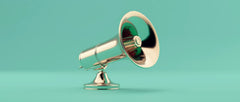
Budget Beauty Trends 2025: How Affordability is Reshaping the Beauty Industry
Table of Contents
- Key Highlights:
- Introduction
- The Shift from Prestige to Mass Beauty
- Economic Factors Driving Change
- The Rise of Affordable Beauty Innovations
- Tariff Turmoil and Its Impact on the Beauty Industry
- The Social Status of Beauty Dupes
- The Revival of Fast Beauty
- The Own-Brand Boom: A New Era of Loyalty
- Beauty Minis: The Impulse Buy Revolution
- The Future of Budget Beauty: What Lies Ahead?
- FAQ
Key Highlights:
- In 2025, mass beauty sales have outpaced prestige beauty sales for the first time, driven by economic factors and consumer preference for affordable products.
- The rise of innovative, multifunctional products in the budget beauty sector is attracting consumers seeking high performance without premium prices.
- Trends such as tariff impacts, beauty dupes, and the popularity of own-brand products are redefining consumer behavior and loyalty in the beauty market.
Introduction
The beauty industry is undergoing a significant transformation in 2025, as budget-friendly products gain unprecedented traction among consumers. The first quarter of the year has witnessed a noteworthy shift, with mass beauty sales surpassing those of prestige brands for the first time in years. This change is not merely a fleeting trend; it reflects deeper economic conditions and evolving consumer expectations. As inflation affects purchasing power and economic uncertainty looms, consumers are increasingly gravitating towards affordable products that deliver impressive performance without breaking the bank. In this article, we delve into the driving forces behind the rise of budget beauty, the latest trends shaping the industry, and what the future holds for consumers and brands alike.
The Shift from Prestige to Mass Beauty
Recent data highlights a significant trend in the beauty market: mass beauty sales in the United States have increased by 3%, while prestige beauty sales have remained flat at just 1%. Similarly, in the UK, mass beauty sales surged by 17% over the past year, compared to a 9% increase in prestige beauty sales. This shift underscores a broader consumer sentiment favoring affordability amidst rising living costs.
Multiple factors are contributing to this trend, including the economic climate characterized by high inflation and rising tariffs. As consumers become more value-conscious, the appeal of affordable beauty products is growing. For many, the decision to switch to mass beauty isn't solely about saving money; it's about seeking high-quality, innovative products that offer excellent performance at a fraction of the cost.
Economic Factors Driving Change
The economic landscape plays a crucial role in shaping consumer behavior in the beauty sector. The lingering effects of inflation, coupled with the potential for a recession, have prompted consumers to reevaluate their spending habits. According to J.P. Morgan Research, there is a 40% probability of a recession occurring in 2025, which could further influence purchasing decisions.
As consumers tighten their belts, the phenomenon of "recession beauty" has emerged, where individuals opt for cost-effective alternatives, such as DIY hair and nail care to reduce salon visits. This shift has not only redefined beauty routines but has also created a fertile ground for brands that cater to budget-conscious consumers.
The Rise of Affordable Beauty Innovations
Despite the economic challenges, the budget beauty sector has experienced a renaissance, largely due to innovation. Brands are increasingly focused on developing multifunctional products that combine skincare benefits with makeup performance. This duality appeals to consumers, particularly younger demographics like Gen Z, who prioritize products that deliver value and transparency.
Liza Suloti, co-founder of a creative marketing agency, emphasizes that today's consumers are not just looking for low prices; they demand high-performing products that align with their values. Brands that successfully navigate this landscape are those that offer innovative formulations and multifunctional benefits.
For example, products like Milani Cosmetics and e.l.f. Beauty are frequently highlighted by influencers on platforms like TikTok, demonstrating that affordability and performance can coexist. Viral products, such as Boots' own brand 17 Melting Creme Blush, which has been dubbed a dupe for higher-end options, are gaining traction as savvy consumers seek out the best deals.
Tariff Turmoil and Its Impact on the Beauty Industry
The recent imposition of tariffs, particularly under the administration of former President Donald Trump, has added another layer of complexity to the beauty market. As brands grapple with rising production costs and logistics challenges, price hikes have become inevitable. Many brands are strategically delaying price increases to give consumers time to adjust, hoping to mitigate the backlash from rising prices.
Lisa Payne, the Head of Beauty at analytics firm Stylus, notes that consumers are already stockpiling their favorite K-beauty products and other international brands in anticipation of further price increases. This behavior reflects a growing awareness of supply chain vulnerabilities and the impact of tariffs on product availability and costs.
The Social Status of Beauty Dupes
As economic pressures mount, the concept of "dupes"—affordable alternatives to high-end beauty products—has gained newfound popularity. No longer merely a cost-saving measure, dupes have become a form of social currency among consumers, particularly within Gen Z. This demographic sees the ability to find quality products at lower prices as a status symbol, making the pursuit of beauty dupes socially acceptable and even desirable.
Circana's "Eat, Play, Love" report emphasizes that shoppers are increasingly attracted to low-cost alternatives, and social media is playing a significant role in this trend. Influencer culture has amplified the visibility of dupes, with many users showcasing their savvy purchases online. This shift represents a broader acceptance of budget-friendly beauty solutions, indicating a cultural change in how consumers perceive value.
The Revival of Fast Beauty
In contrast to movements promoting sustainability and mindful consumption, fast beauty is experiencing a resurgence. This trend is characterized by rapid product turnover and a focus on affordability, particularly among budget beauty brands. Livestream shopping events have emerged as an effective strategy for driving sales, allowing consumers to make quick purchases in an engaging format.
Pete Dick, CEO of Grant Digital, notes that the average order value in live shopping sessions tends to be higher, as consumers are drawn to the immediacy and entertainment of the experience. This model encourages impulse buying, particularly for budget-friendly products, as shoppers feel compelled to take advantage of exclusive offers.
The Own-Brand Boom: A New Era of Loyalty
Retailer-owned beauty lines are rapidly gaining traction as a key strategy for brand differentiation and customer loyalty. Amid rising prices and economic instability, consumers are increasingly opting for private label products, which can be 20-30% cheaper than their branded counterparts. This trend is particularly pronounced in the UK, where mass beauty prices have surged by 32% over the past five years.
Today’s consumers view own-brand products not as a compromise but as a smart choice backed by comprehensive consumer data. Retailers are leveraging this momentum to develop ranges of affordable products that resonate with shoppers seeking both quality and value.
Beauty Minis: The Impulse Buy Revolution
Miniature beauty products have entered a new phase of popularity, becoming prominent fixtures in retail environments. These travel-sized items are not only affordable but also serve as powerful tools for driving impulse purchases. Positioned strategically near checkouts, mini products capture consumer attention and encourage spontaneous buying decisions.
Fiona Glen, Managing Director of The Red Tree, highlights that retailers are increasingly recognizing the potential of minis, leading to enhanced assortments and visibility. These products offer convenience for on-the-go consumers and can easily fit into any beauty routine, making them highly appealing.
The Future of Budget Beauty: What Lies Ahead?
As the beauty landscape continues to evolve, the emphasis on budget-friendly, high-performance products is likely to persist. Brands that prioritize innovation, value, and consumer engagement will thrive in this competitive environment. Moreover, the interplay between economic factors, social trends, and consumer preferences will shape the future of beauty shopping.
With ongoing discussions about the potential for economic recession, brands must remain agile, adapting to changing consumer needs while maintaining their commitment to quality and affordability. The rise of budget beauty is not just a trend but a reflection of a shifting mindset among consumers who prioritize value, transparency, and performance.
FAQ
What are the main factors driving the rise of budget beauty products?
The rise of budget beauty is primarily driven by economic factors such as inflation and potential recession, which have made consumers more price-conscious. Additionally, the demand for innovative, high-performing products at affordable prices has spurred growth in this sector.
How are beauty brands responding to the changing landscape?
Beauty brands are responding by focusing on product innovation, offering multifunctional and high-performance products that appeal to value-conscious consumers. Many brands are also strategically managing pricing in light of economic pressures.
What role do social media and influencers play in the budget beauty trend?
Social media and influencers play a crucial role in promoting budget beauty products, particularly through platforms like TikTok. Influencers often showcase affordable alternatives, making them desirable and socially acceptable among consumers.
Are own-brand beauty products becoming more popular?
Yes, own-brand beauty products are becoming increasingly popular as consumers seek value without compromising on quality. Retailers are capitalizing on this trend by developing comprehensive ranges of affordable beauty products.
What are "dupes," and why are they significant in the beauty market?
Dupes are affordable alternatives to high-end beauty products that offer similar quality and performance. They have gained prominence as consumers seek value, turning them into a form of social status among budget-conscious shoppers.
POWER your ecommerce with our weekly insights and updates!
Stay aligned on what's happening in the commerce world
Email Address
Handpicked for You

08 September 2025 / Blog
How to Avoid Greenwashing: Rules, Real-World Examples, and a Practical Playbook for Honest Environmental Claims
Read more
08 September 2025 / Blog
Klaviyo 2025: How its AI-Driven CRM Transforms Shopify Email Marketing and the Customer Experience
Read more
08 September 2025 / Blog


